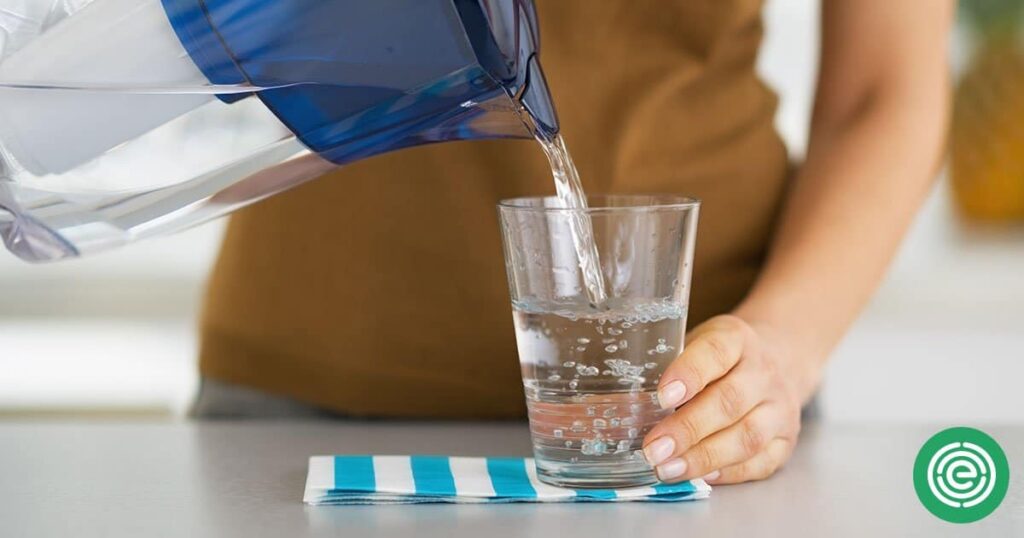Clean, clear, and tasteless water. All benefits you get from a properly functioning water system.
That’s why paying attention to your water filtration system is important by ensuring they’re maintained.

Depending on the situation, a water filter will require cleaning only. Other times, you’d need to change it completely.
How to clean a water filter
To get a clear picture, we’ll put some factors into common. First, the type of filter in your home plays a big role.
Synthetic fiber-pleated filters can be cleaned well to restore filtration speed and overall effectiveness. This is in stark contrast to most paper models that are less suited.
Another angle to look at is the cost and time factor. For example, while cleaning a water filter is sometimes effective, it’s not a good strategy in the long run.
Over time, the contaminants build up to a point it becomes difficult to remove them even after cleaning. With this, you’d be better off buying a new filter for only $40.
Sediment Filters
Cleaning your water filter regularly can extend its lifespan, especially if your water has high amounts of iron or impurities.
Here’s a clear breakdown of how to approach cleaning sediment filters:
- Before you start, make sure your acid is ready. Ideally, muriatic acid and italic acid are great options. Muriatic is usually bought as pre-mixed solutions. No need to worry about mixing with water. However, if you prefer oxalic acid, you can mix 2 oz of the powder with water.
- Gently remove the filter housing and take out the cartridge.
- Keep the O ring to the side.
- Use water and rinse the filter housing. This removes all the heavy particles.
- Rinse off the filter.
- Next, depending on the level of contamination, soak the housing with the cartridge inside into the acid solution for 15 to 20 minutes.
- Rinse both the housing and cartridge to remove any acid left on them.
- Allow the filter to dry off with natural air before assembling.
Carbon (Charcoal) Filters

Time to look at carbon filters. These types of filters are made up of 3 layers. First, on the inside lies the carbon. Then, you have a paper-type layer neatly wrapped around it. This layer is where most of the filtration action happens.
This paper layer acts like a bodyguard for your filter, preventing impurities from barging through.
Then, on the outside layer is a plastic mesh netting that puts the paper in place.
Cleaning the filter starts from the netting. You’ll need to remove the inner parts to gain access.
Here’s how:
- Use a knife to cut close to the bottom and top of the cartridge to give enough room to remove the cartridge.
- Then cut through the paper, leaving a small strip attached to the inner carbon block. This makes it easy for you to roll the paper back up when you’re done.
- Remove the outside paper layer.
- Rinse off all impurities and dirt from the charcoal core and the paper.
- Dip a brush inside a bowl of bleach. Then, scrub off the paper layer from both sides with warm water.
- Soak the entire filter inside the water-bleach mixture.
- Rinse everything with water.
- Roll up the paper and secure it with nylon at the top.
- Assemble everything.
This step-by-step process will provide water that’s tasteless and refreshing.
Brita
The Brita filter pitchers and dispensers are built to last a long time. They’re also very easy to use and live up to the high water quality potential.
Making them an ideal choice for your drinking water.
They make for cost-efficient maintenance filters. All you have to do is simply refill the cartridge with granular activated carbon.
Activated carbon is the key source of filtration for Brita filters. The carbon works by trapping chemical impurities like chlorine in its pores.
Over time, these pores get clogged and become less effective.
This means it’s time to replace the carbon.
How do you do that?
We covered the granular details below:
- Drill a small hole in the middle of the cartridge head.
- Pour the old charcoal through this hole and rinse the filter housing with clean water to push out any particles left.
- Sanitize the housing with bleach and rinse it with water after.
- Using a funnel, fill in the cartridge with new coal. More carbon means a longer cartridge lifespan.
- Use rubber to seal the hole properly.
- Finally, install the cartridge back into your dispenser.
Modular filters like a refrigerator
Cleaning filters found in your refrigerator is pretty straightforward. First, take plain water and use it to flush the filter from both sides.
Or you can soak it in vinegar or dish soap for a few minutes and rinse it later.
How you can unclog a PUR water filter
PUR filters, while effective, are prone to clogging. So within just a few days, you’d notice a decrease in flow rate.
Causes of clogging in PUR.
There are 2 main explanations for drag in the filtration process:
- First, air pockets or bubbles are trapped inside the filter. A simple test you can use to find out is to put the filter inside water and see if it floats.
- Usually, the activated carbon media is mixed with small styrofoam balls. As the filtration process goes on, these balls can obstruct the filter’s holes where water is meant to flow.
How to fix it
We’ll proffer the solutions according to each problem.
- For the first problem, shake the cartridge slightly to allow air to escape.
- Force water through the small holes in the filter to dislodge the styrofoam balls so water can flow easily.
When should you clean your water filter?
Notice a drop in taste or flow rate? Then, it’s probably time you need to check your water filtration system and get the key parts replaced.
However, if you’re on a tight budget, you can settle for cleaning using the guidelines.

Jay
Jay is a health and wellness enthusiast with expertise in water quality and nutrition. As a knowledgeable advocate for holistic well-being, Jay successfully manages Type 2 Diabetes through informed lifestyle choices. Committed to sharing reliable and authoritative insights, Jay combines firsthand experience with a passion for enhancing health."
